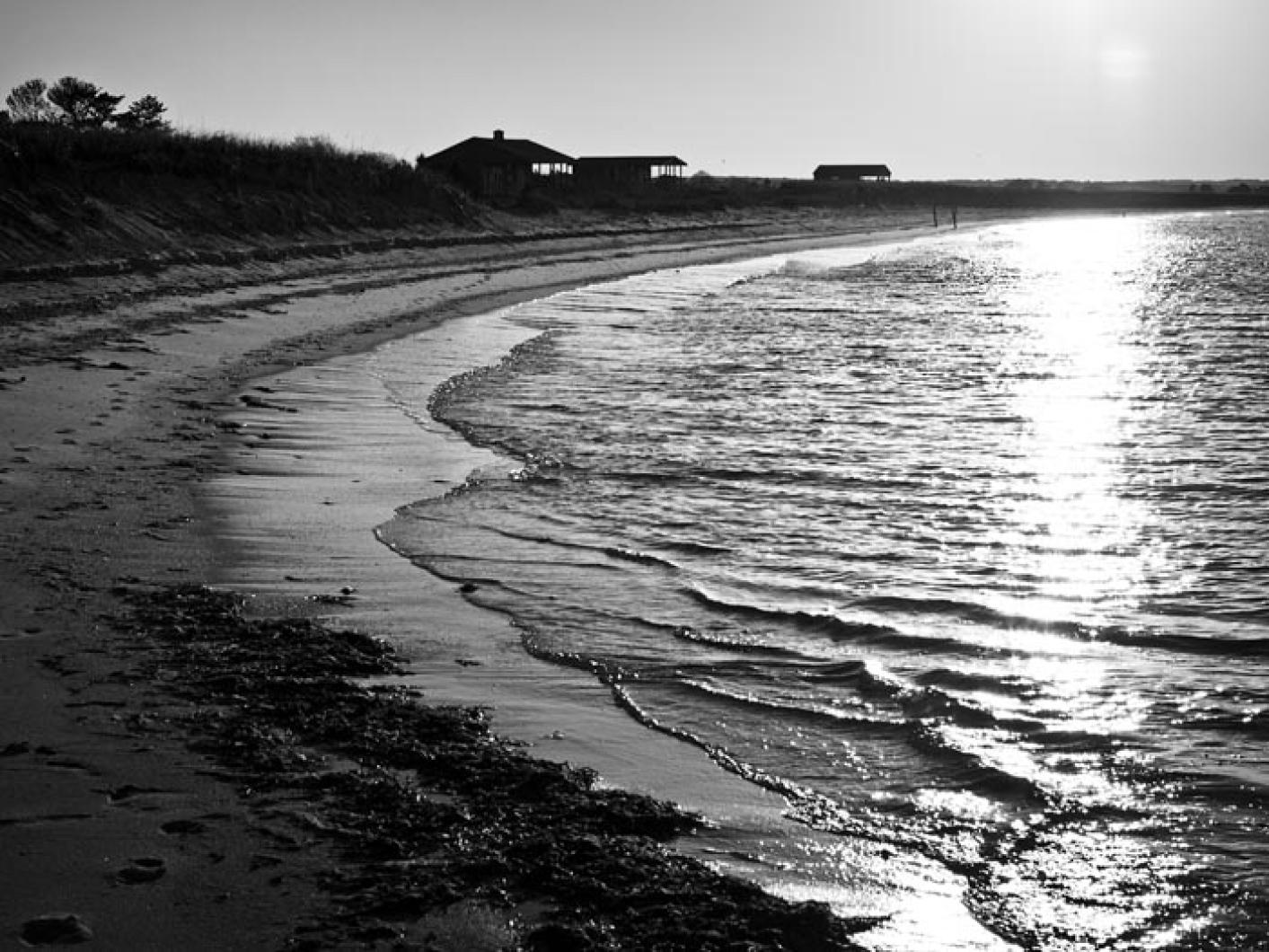Less than three per cent of the earth’s water is fresh, the water that sustains us. As the oceans rise due to global warming salt water is creeping into coastal aquifers, underground reservoirs where drinking water is stored. This is called saltwater intrusion.
In 1998 the Environmental Protection Agency designated the entire Vineyard as a sole source aquifer, which means our groundwater is the sole source of drinking water for “the Island’s residents and visitors; there is no viable alternative source of sufficient supply.”
The Martha’s Vineyard Shellfish Group spearheaded the publication of a booklet called The Island Blue Pages: A Guide to Protecting Martha’s Vineyard Water, and it offers a freshwater primer: “All our drinking water, whether from private wells or municipal water supplies, comes from the rain that falls on Martha’s Vineyard. Contrary to folklore, there is no underground stream from the mainland,” the booklet explains. It continues:
“Most of the Island’s drinking water is drawn from one large connected aquifer that lies beneath the towns of Edgartown, Oak Bluffs, Tisbury and most of West Tisbury . . . In the hilly parts of West Tisbury, Chilmark, and Aquinnah, small aquifers are isolated from each other by impermeable layers of clay and till. The Chappaquiddick aquifer is separate from the rest of the Vineyard and feeds groundwater to Katama and Cape Pogue Bays, and Pocha and Caleb’s Ponds.”
Saltwater intrusion “is a real issue for low lying areas with private wells and septics, according to Bill Wilcox, recently retired Martha’s Vineyard Commission water resources planner. “Wells that were fine are going to start having increased sodium levels, which is somewhat hazardous in terms of heart problems and a taste problem due to increased sodium.” He adds that increased sodium levels can also contribute to high blood pressure.
Sea level rise will have “significant hydrologic effects on the Vineyard’s water resources,” said Scott Horsley, president of the Horsley Witten Group in Sandwich, a hydrologist, and member of the Massachusetts Climate Change Adaptation Advisory Committee. He outlined three clear impacts:
• Coastal wetlands, such as salt marshes, will migrate inland, or try to unless they encounter structures such as roads, parking lots or building foundations.
• “Groundwater levels (the water table) will rise.
• The interface between the fresh groundwater and the underlying salt groundwater will rise and migrate inland causing increased salt intrusion into wells near the shoreline and/or those that are drilled deep into the aquifer.
The Vineyard is named in a 2000 report for U.S. Global Change Research Program titled, Water: The Potential Consequences of Climate Variability and Change for the Water Resources of the United States. The report said: “Relative sea level rise will affect groundwater aquifers and coastal ecosystems . . . and will cause an increase in the intrusion of salt water into . . . shallow island aquifers (such as those found in Hawaii, Nantucket, Martha’s Vineyard.)”
Saltwater intrusion, Mr. Wilcox said, will most certainly affect “some parts of Mattakesett, possibly some low-lying private wells in Edgartown’s Ocean Heights neighborhood if they are not yet on town water, scattered homes on the south shore Great Ponds, especially parts of Tisbury and Chilmark Great Ponds, some parts of Lobsterville in Aquinnah that are located on a barrier beach, and Chappy Point, which already has a history of high sodium and salt levels because too many houses are using the isolated aquifer.” He also said: “Saltwater intrusion will be an up-Island and Chappy phenomenon.” Town water departments may be asked to extend service and sewer systems may have to be expanded.
There are also unknowns. Mr. Horsley raises questions. “How many septic systems will become inundated with higher groundwater or will fall out of compliance with the Title 5 vertical separation requirements? And how many wells will experience saltwater intrusion?” he said.
Safe drinking water and wastewater concerns are not the only impacts of saltwater intrusion. It decreases the amount of fresh water needed to irrigate crops and can change salinity patterns in estuaries, affecting fish and shellfish breeding grounds, and can harm aquatic plants and animals that cannot tolerate higher salinity. Over-pumping of aquifers due to population growth also contributes to the problem.
Saltwater intrusion is one example of how human-induced global warming is affecting the Island and yet another warning that coastal communities are on the frontline when it comes to the changing climate.
But not all impacts are coastal. Next, this series will look at how global warming is affecting the land — the vegetation, plants, animals and crops, as well as human health and safety, on this little piece of land in the sea.
Liz Durkee is the conservation agent for the town of Oak Bluffs. This is the ninth in an occasional series she is writing for the Gazette Commentary Page about climate change and what it means for the Vineyard.




Comments
Comment policy »